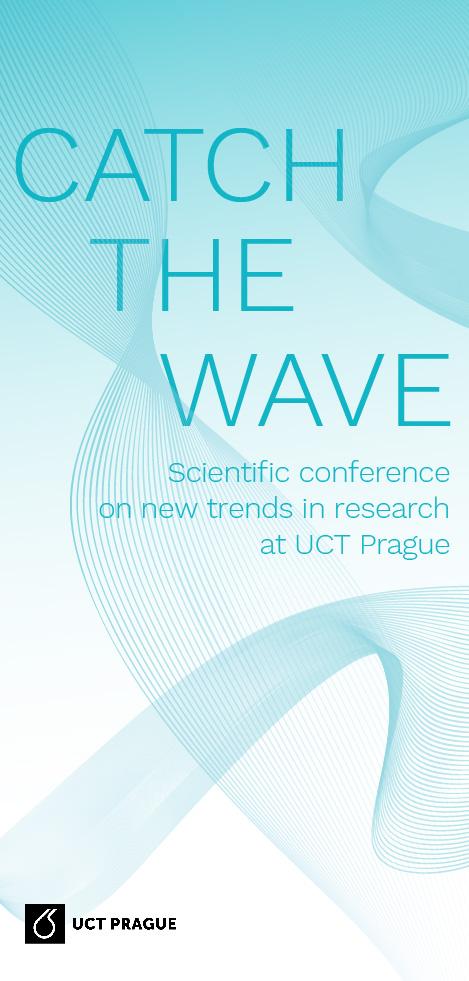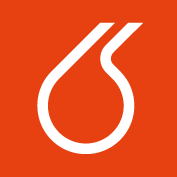
Catch the Wave
Vědecká konference o aktuálních trendech výzkumu na VŠCHT Praha
24. 11. 2022, 15:00 – 18:00
posluchárna BI (mapa)
VŠCHT Praha uspořádala dne 24. 11. 2022 vědeckou konferenci Catch the Wave u příležitosti oslav 70 let samostatné existence univerzity. Hlavním tématem byly nově se rozvíjející výzkumné směry s potenciálem k širší spolupráci mezi výzkumníky napříč školou. Na konferenci, která proběhla v posluchárně BI, vystoupili vždy dva zástupci z každé fakulty a jeden zástupce Ústavu ekonomiky a managementu.
Jednotlivé příspěvky byly časově omezeny na pětiminutovou prezentaci a stejně dlouhou diskuzi. Po skončení této části byl prostor pro neformální diskuzi spojenou s drobným občerstvením.
Akce byla určená jak pro zaměstnance, tak studenty.
Program - příspěvky
Ing. et Ing. Tatiana Trecáková, Ph.D.
Life cycle assessment, carbon footprint and sustainability indicators
Potential applications of the Life Cycle Assessment method in research. Current issues related to sustainability, carbon footprint and other environmental consequences of technological activities. Life Cycle Assessment is a systematic analysis of environmental impacts over the entire life cycle of technologies, products an services to quantify sustainability indicators.
Doc. Ing. David Kubička, Ph.D., MBA
Green (working) horse of the chemical industry
Catalysis is the most powerful tool of green chemistry, both being essential for the chemical industry. As we increasingly strive for sustainability with emphasis on minimized adverse environmental impacts, the importance of catalysis is going grow even more. Here we show the opportunities and challenges of merging (heterogeneous) catalysis and green chemistry to enable the transition from fossil to renewable raw materials in the chemical industry.
Ing. Eva Jablonská, Ph.D
In vitro testing of adverse effects of natural substances and their derivatives
Many natural substances or their derivatives have beneficial effects and some even have the potential to become new drugs; however, their potential adverse effects must be refuted first. The first stage of testing is carried out in vitro. The ideal in vitro test reflect the situation in the human body and is fast, affordable, and high-throughput. We focus on endocrine disruption, i.e. whether the substance interferes with the endocrine system and on genotoxicity, i.e. whether the substance damages DNA. The in vitro methods used will be explained, including the specific applications.
MSc. Aristeidis Tsagkaris, Ph.D.
Towards cost-efficient, rapid and potentially portable food analysis
Ensuring food safety and quality through the development of “fit-for-purpose” analytical methods is a task with significant socioeconomical impact. Massive effort has been paid to improve method detectability and sensitivity to detect analytes at ultra-trace-levels. However, such workflows usually are tedious and expensive limiting their applicability. Within this context, we have been working on delivering sensitive analytical methods that can be also cost-efficient, rapid and potentially applicable at the point-of-need (PON). This flash talk will highlight our advances in the food safety field focusing on two-case studies: i) smartphone-based screening of neurotoxic pesticides and ii) mycotoxin detection based on ambient mass spectrometry (AMS).
Ing. Dominik Fajstavr, Ph.D.
Preparation of polymer and carbon nanostructures by excimer laser
The preparation and modification of the surfaces of polymer substrates by laser irradiation is the main subject of this presentation. Nanostructuring using laser techniques is one of the possible methods to modify the chemical or physical properties of the material without affecting the bulk properties. Polymers are the ideal substrate for laser modification due to their good processability, easy handling, variability of properties, and affordable price. The main goal is laser nanostructuring, especially of composite substrates based on polymer and filler in the form of carbon or another dopant. The influence of the polymer and the present dopant on the nanostructures created after laser modification and their surface properties is studied.
Ing. Petr Kovaříček, Ph.D.
Double molecular dynamicity and photoorganoctalysis: self-processes in action
A molecule rarely exists in isolation–it is naturally surrounded by other molecules, solvent or species adopting a different physical form, such as the solid-liquid interphase. If such a compound is also intrinsically reactive with other species present, a network of possible reaction pathways sharing their components is established, called a reaction network. Phase interfaces always dictate the dynamic self-organization of species in their proximity. The dynamic physisorption entangled with covalent dynamics is the essence of our work. Abrupt change of properties at the phase interface creates gradients. Energy supplied by an external stimulus, e.g. a photon, interacts with the gradients and molecules - energy transfers in between the substrate and the adlayer. We study structural adaption of dynamic interphase self-assembly to stimuli and its application for optoelectronics and photoorganocatalysis.
Dr. Mario Vazdar
Molecular simulations – from biological systems to design of new materials
Molecular simulations are a powerful computational tool used to investigate and predict the behavior and properties of various matter. In contrast to many experiments, they provide a detailed structural and dynamical insight at the molecular level in many applications, ranging from biological systems, such as peptides, proteins or membranes, up to design of new materials, like drug carriers. In this talk, I will show a few selected snapshots of the recent research, showing the community the power of simulations with the aim to connect to other researchers at University of Chemistry and Technology.
doc. Ing. Vít Pošta, Ph.D.
Regional Impacts of Macroeconomic Shocks
The impacts of macroeconomic shocks that originate both within and outside an economy are typically analyzed from the point of view of national economies or groups of national economies. This intervention presents results of three published or to be published papers that evaluate the impacts of macroeconomic shocks from the perspective of regions of a national economy or national economies. Two papers are focused on the impacts of fiscal policy, and one paper deals with possible impacts of automation.
Ing. Marcela Dendisová, Ph.D.
Vibrational spectroscopy: From macroworld to nanoworld
The story of the vibrational spectroscopic techniques started to write more than one hundred years ago and through decades, they established as a valuable tool for analysis, detection, and characterization of various materials and samples in a broad spectrum of science fields at the interface of chemistry, physics, biology, medicine, archeology, and many others. The second milestone occurred approximately 50 years ago by observing the enhancing effect of plasmonic mesostructured surfaces. Employing such special substrates, we are able to investigate small amounts of the analytes and dramatically improve the detections’ limits of basic techniques. Nowadays, this group of analytical techniques is still developing field covering not only basic infrared and Raman (micro)spectroscopy, but also advanced ones such as surface enhanced Raman scattering and infrared absorption or near-field methods.
In the last 20 years, the researchers’ attention has been caught by actually specific techniques. Thanks to the effort to produce novel smart materials with mesostructure exhibiting characteristic properties, it was crucial to develop a diffraction unlimited tool allowing sufficient characterization of such materials in nanoscale. To overcome the spatial resolution, vibrational spectroscopies are combined with scanning probe microscopies. Then so-called techniques of scanning near-field infrared microscopy and tip-enhanced Raman spectrometry are able to scan small features on the surface and study/visualize distribution of various functional groups from chemical point of view with resolution of tens nanometers. Such powerful techniques open a door to a new dimension of research looking for a correlation between physical properties, chemical composition, and other (mechanical, electric, magnetic) properties which are hidden from the macroworld point of view.







